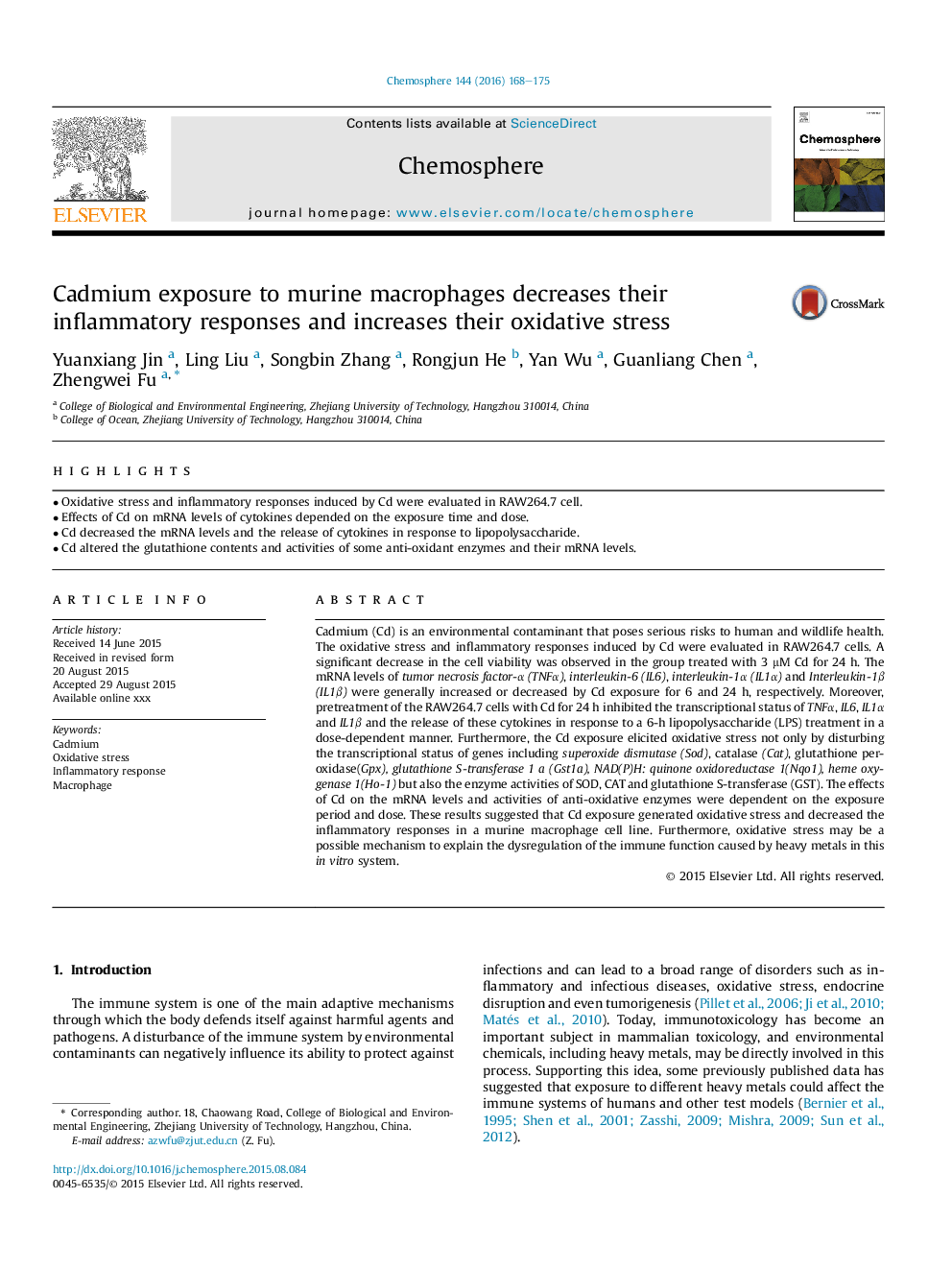| Article ID | Journal | Published Year | Pages | File Type |
|---|---|---|---|---|
| 6307316 | Chemosphere | 2016 | 8 Pages |
Abstract
Cadmium (Cd) is an environmental contaminant that poses serious risks to human and wildlife health. The oxidative stress and inflammatory responses induced by Cd were evaluated in RAW264.7 cells. A significant decrease in the cell viability was observed in the group treated with 3 µM Cd for 24 h. The mRNA levels of tumor necrosis factor-α (TNFα), interleukin-6 (IL6), interleukin-1α (IL1α) and Interleukin-1β (IL1β) were generally increased or decreased by Cd exposure for 6 and 24 h, respectively. Moreover, pretreatment of the RAW264.7 cells with Cd for 24 h inhibited the transcriptional status of TNFα, IL6, IL1α and IL1β and the release of these cytokines in response to a 6-h lipopolysaccharide (LPS) treatment in a dose-dependent manner. Furthermore, the Cd exposure elicited oxidative stress not only by disturbing the transcriptional status of genes including superoxide dismutase (Sod), catalase (Cat), glutathione peroxidase(Gpx), glutathione S-transferase 1 a (Gst1a), NAD(P)H: quinone oxidoreductase 1(Nqo1), heme oxygenase 1(Ho-1) but also the enzyme activities of SOD, CAT and glutathione S-transferase (GST). The effects of Cd on the mRNA levels and activities of anti-oxidative enzymes were dependent on the exposure period and dose. These results suggested that Cd exposure generated oxidative stress and decreased the inflammatory responses in a murine macrophage cell line. Furthermore, oxidative stress may be a possible mechanism to explain the dysregulation of the immune function caused by heavy metals in this in vitro system.
Related Topics
Life Sciences
Environmental Science
Environmental Chemistry
Authors
Yuanxiang Jin, Ling Liu, Songbin Zhang, Rongjun He, Yan Wu, Guanliang Chen, Zhengwei Fu,
